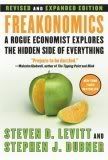Defaults Have Higher Interest Rates
Matt over at Prosper Lending Review posted an article on how loan interest rates vary within a credit grade. One of his conclusions is that defaulted loans have a higher average interest rate than current loans.
So, what do these numbers tell us? Well, if we look at loans in the B through HR categories, the loans that defaulted had a 1.7% through 2.6% higher interest on average than other loans in that credit grade. What this means is that prior to defaulting lenders considered these loans a higher risk and didn't bid down the interest rate as low as they did for other loans.
The difference is even more pronounced when you look at the difference in interest rates between loans that are current versus loans that have defaulted. Lenders put as much as a 3.74% risk premium on loans that ended up defaulting - clearly lenders were seeing something they didn't like in the listings compared to other listings of the same credit grade.
I didn't find this at all surprising:
... If we assume that lenders are doing a reasonable job pricing loans, then the interest rate is proportional to the default rate (I made such an argument and have stats to go with it). I'd then expect the default group to have a higher average interest rate.
So, now a thought experiment to back this up. As I previously pointed out, Prosper lenders do assign higher interest rates to more risky loans. Lets model this as a 1% increase in interest for a 0.5% increase in default rate. This is NOT based on Prosper data, but chosen to be convenient for this exercise. Lets look at 1000 loans each at 11% - 15%, and the number of defaults that occur.
| Interest Rate | Default Rate | Bad Loans | Good Loans |
| 11% | 1.0% | 10 | 990 |
| 12% | 1.5% | 15 | 985 |
| 13% | 2.0% | 20 | 980 |
| 14% | 2.5% | 25 | 975 |
| 15% | 3.0% | 30 | 970 |
It's obvious from the table that the bad loans in this exercise weight more heavily toward the 15% interest rate while the good loans weight toward the 11% interest rate. This can be expressed empirically by taking the weighted average of the interest rates. The math give the bad loans a 13.5% weighted average versus the good loans with a 12.99% weighted average, just as Matt had found.







No comments:
Post a Comment